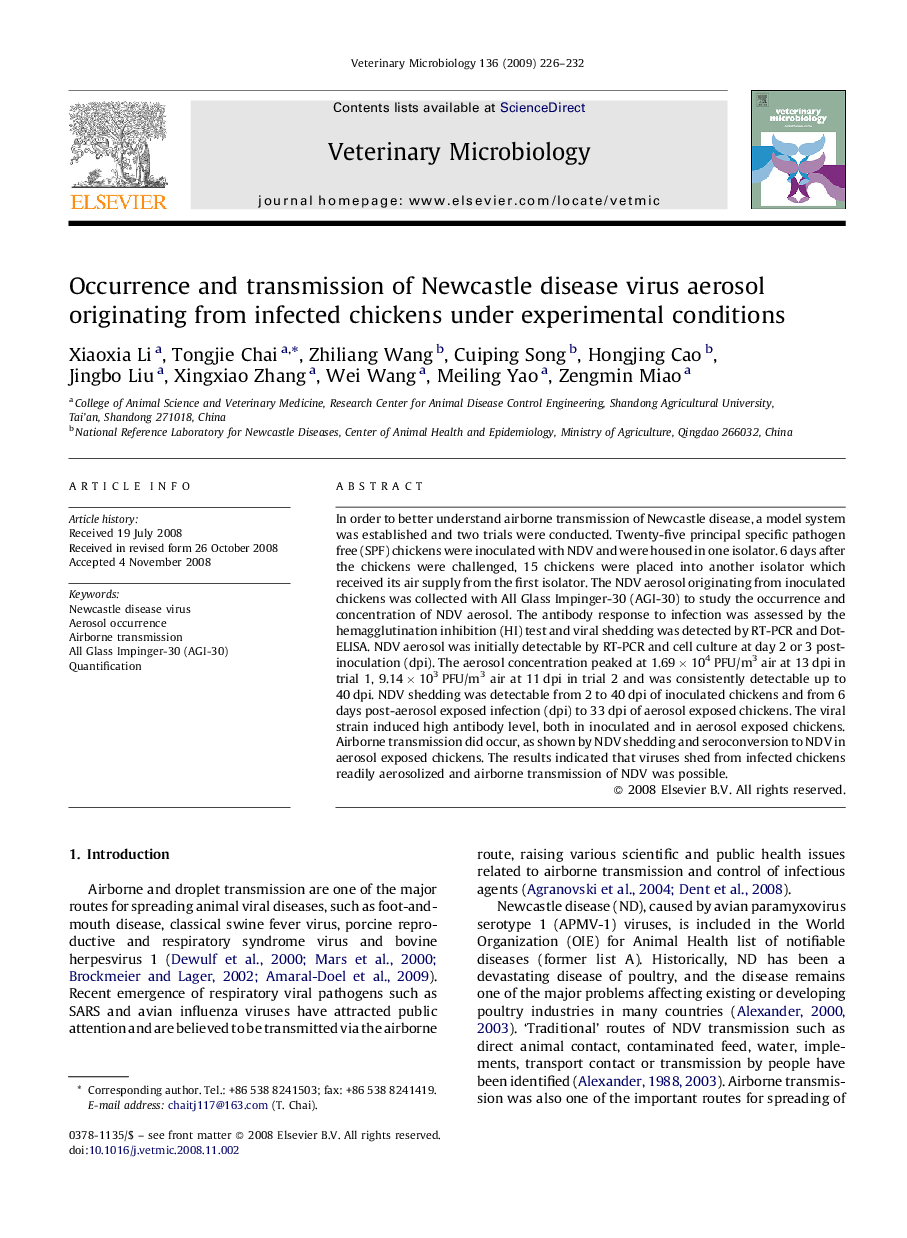| Article ID | Journal | Published Year | Pages | File Type |
|---|---|---|---|---|
| 2468449 | Veterinary Microbiology | 2009 | 7 Pages |
In order to better understand airborne transmission of Newcastle disease, a model system was established and two trials were conducted. Twenty-five principal specific pathogen free (SPF) chickens were inoculated with NDV and were housed in one isolator. 6 days after the chickens were challenged, 15 chickens were placed into another isolator which received its air supply from the first isolator. The NDV aerosol originating from inoculated chickens was collected with All Glass Impinger-30 (AGI-30) to study the occurrence and concentration of NDV aerosol. The antibody response to infection was assessed by the hemagglutination inhibition (HI) test and viral shedding was detected by RT-PCR and Dot-ELISA. NDV aerosol was initially detectable by RT-PCR and cell culture at day 2 or 3 post-inoculation (dpi). The aerosol concentration peaked at 1.69 × 104 PFU/m3 air at 13 dpi in trial 1, 9.14 × 103 PFU/m3 air at 11 dpi in trial 2 and was consistently detectable up to 40 dpi. NDV shedding was detectable from 2 to 40 dpi of inoculated chickens and from 6 days post-aerosol exposed infection (dpi) to 33 dpi of aerosol exposed chickens. The viral strain induced high antibody level, both in inoculated and in aerosol exposed chickens. Airborne transmission did occur, as shown by NDV shedding and seroconversion to NDV in aerosol exposed chickens. The results indicated that viruses shed from infected chickens readily aerosolized and airborne transmission of NDV was possible.
